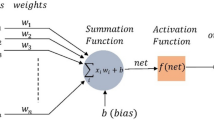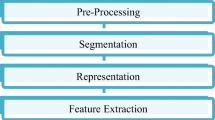Abstract
This paper presents an application of Inductive Logic Programming (ILP) and Backpropagation Neural Network (BNN) to the problem of Thai character recognition. In such a learning problem, there exist several different classes of examples; there are 77 different Thai characters. Using examples constructed from character images, ILP learns 77 rules each of which defines each character. However, some unseen character images, especially the noisy images, may not exactly match any learned rule, i.e., they may not be covered by any rule. Therefore, a method for approximating the rule that best matches the unseen data is needed. Here we employ BNN for finding such rules. Experimental results on noisy data show that the accuracy of rules learned by ILP without the help of BNN is comparable to other methods. Furthermore, combining BNN with ILP yields the significant improvement and surpasses the other methods tested in our experiment.
Preview
Unable to display preview. Download preview PDF.
Similar content being viewed by others
References
C. Baroglio and M. Botta. Multiple Predicate Learning with RTL. Topic in Artificial Intelligence, LNAI 992, 1995.
H. Blockeel and L. De Raedt. Experiments with Top-Down Induction of Logical Decision Trees. Technical Report CW247, Dept. of Computer Science, K.U.Leuven, 1997.
M. Botta, A. Giordana and R. Piola. FONN: Combining First Order Logic with Connectionist Learning. Proceedings of the 14th International Conference on Machine Learning, 1997.
S. Dzeroski, N. Jacobs, M. Molina, C. Moure, S. Muggleton and W.V. Laer. Detecting Traffic Problems with ILP. Proceedings of the 8th International Workshop on Inductive Logic Programming, 1998.
S. Dzeroski, S. Schulze-Kremer, K.R. Heidtke, K. Siems and D. Wettschereck. Applying ILP to Diterpene Structure Elucidation from 13C NMR Spectra. Proceedings of 6th International Workshop on Inductive Logic Programming, 1996.
S. Eupiboon. Thai Handwritten Character Recognition by Considering the Character Head. Master Thesis, KMIT, Thailand, 1988 (in Thai).
W.V. Laer, S. Dzeroski and L.D. Raedt. Multi-Class Problems and Discretization in ICL Extended Abstract. Proceedings of the Mlnet Familiarization Workshop on Data Mining with Inductive Logic Programming, pp.53–60, 1996.
C. Lursinsap. Speeding Up Handwritten Character Neural Learning by Surface Projection. Proceedings of the 2nd Symposium on Natural Language Processing, pp. 198–205, 1995.
L. Martin and C. Vrain. MULT_ICN: An Empirical Multiple Predicate Learner. Proceedings of the 5 th International Workshop on Inductive Logic Programming, 1995.
S. Muggleton. Inverse Entailment and PROGOL. New Generation Computing, 3:245–286, 1995.
S. Muggleton, D. Page and A. Srinivasan. An Initial Experiment into Stereochemistry-Based Drug Design Using Inductive Logic Programming. Proceedings of the 6th International Workshop on Inductive Logic Programming, pp.25–40, 1996.
P. Phokharatkul and C. Kimpan. Recognition of Handprinted Thai Characters Using the Cavity Features of Character Based on Neural Network. Proceedings of the 1998 IEEE Asia-Pacific Conference on Circuits and Systems, pp. 149–152. 1998.
D. Rattanatarn and S. Jitapunkul. Thai Printed Characters Recognition Using the Fuzzy Logic Technique and Syntactic Method. Proceedings of the 18th Conference of Electrical Engineering, 1995 (in Thai)
D.E. Rumelhart, G.E. Hinton and R.J. Williams. Learning internal representations by error propagation. In D. E. Rumelhart, & J. L. McClelland (Eds.), Parallel distributed processing (Vol 1), Cambridge, MA: MIT Press, 1986.
T. Tanprasert and C. Tanprasert, Variable Simulated Light Sensitive Model for Handwritten Thai Digit Recognition. Proceedings of the 2nd Symposium on Natural Language Processing, pp. 173–179, 1995.
G.G. Towell and J.W. Shavlik. Knowledge-Based Artificial Neural Networks. Artificial Intelligence, 70 (4):119–116, 1994.
Author information
Authors and Affiliations
Editor information
Editors and Affiliations
Rights and permissions
Copyright information
© 1999 Springer-Verlag Berlin Heidelberg
About this paper
Cite this paper
Kijsirikul, B., Sinthupinyo, S. (1999). Approximate ILP Rules by Backpropagation Neural Network: A Result on Thai Character Recognition. In: Džeroski, S., Flach, P. (eds) Inductive Logic Programming. ILP 1999. Lecture Notes in Computer Science(), vol 1634. Springer, Berlin, Heidelberg. https://doi.org/10.1007/3-540-48751-4_16
Download citation
DOI: https://doi.org/10.1007/3-540-48751-4_16
Published:
Publisher Name: Springer, Berlin, Heidelberg
Print ISBN: 978-3-540-66109-2
Online ISBN: 978-3-540-48751-7
eBook Packages: Springer Book Archive




